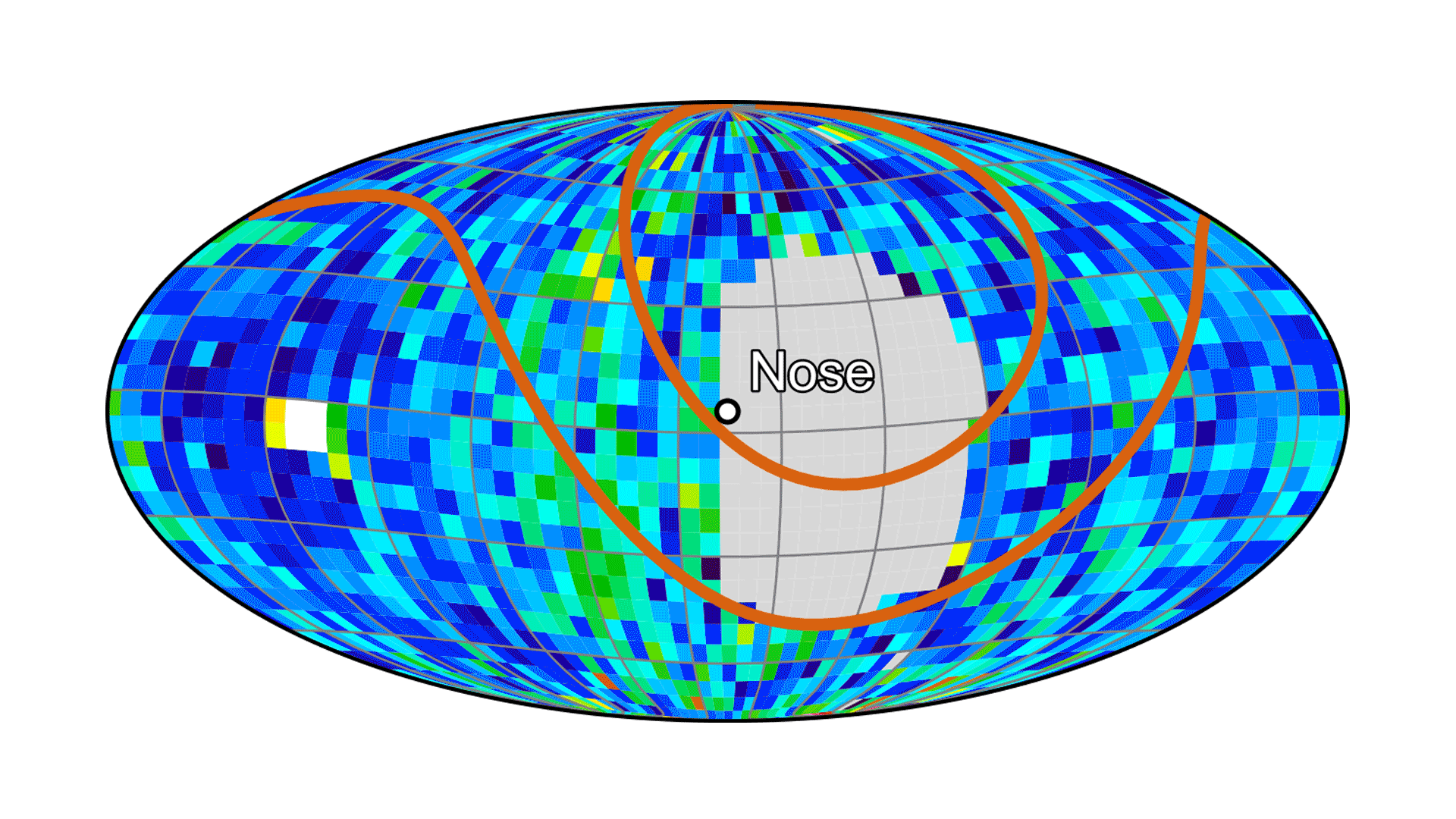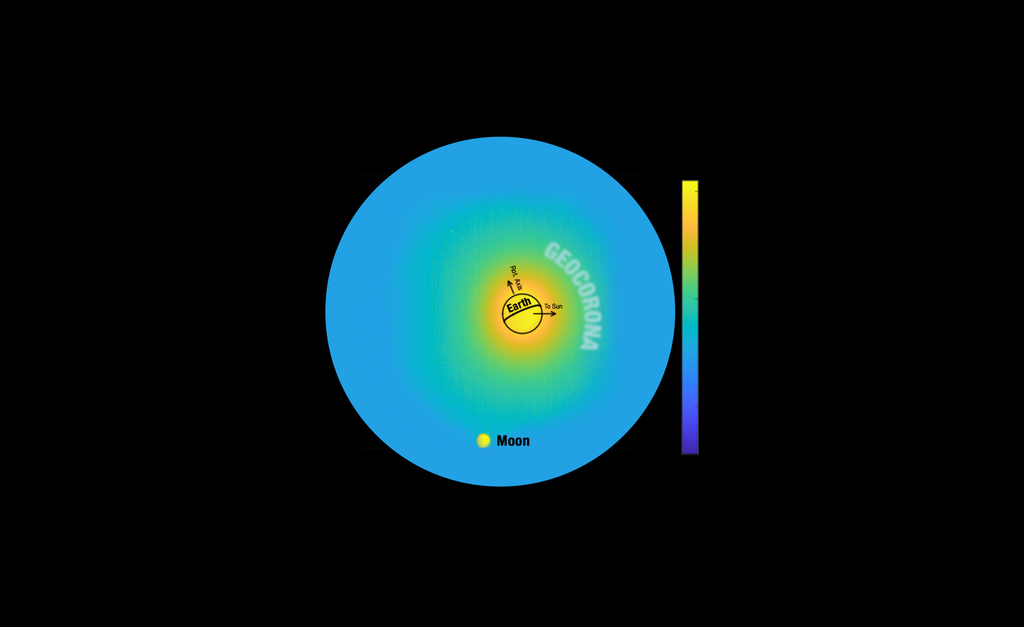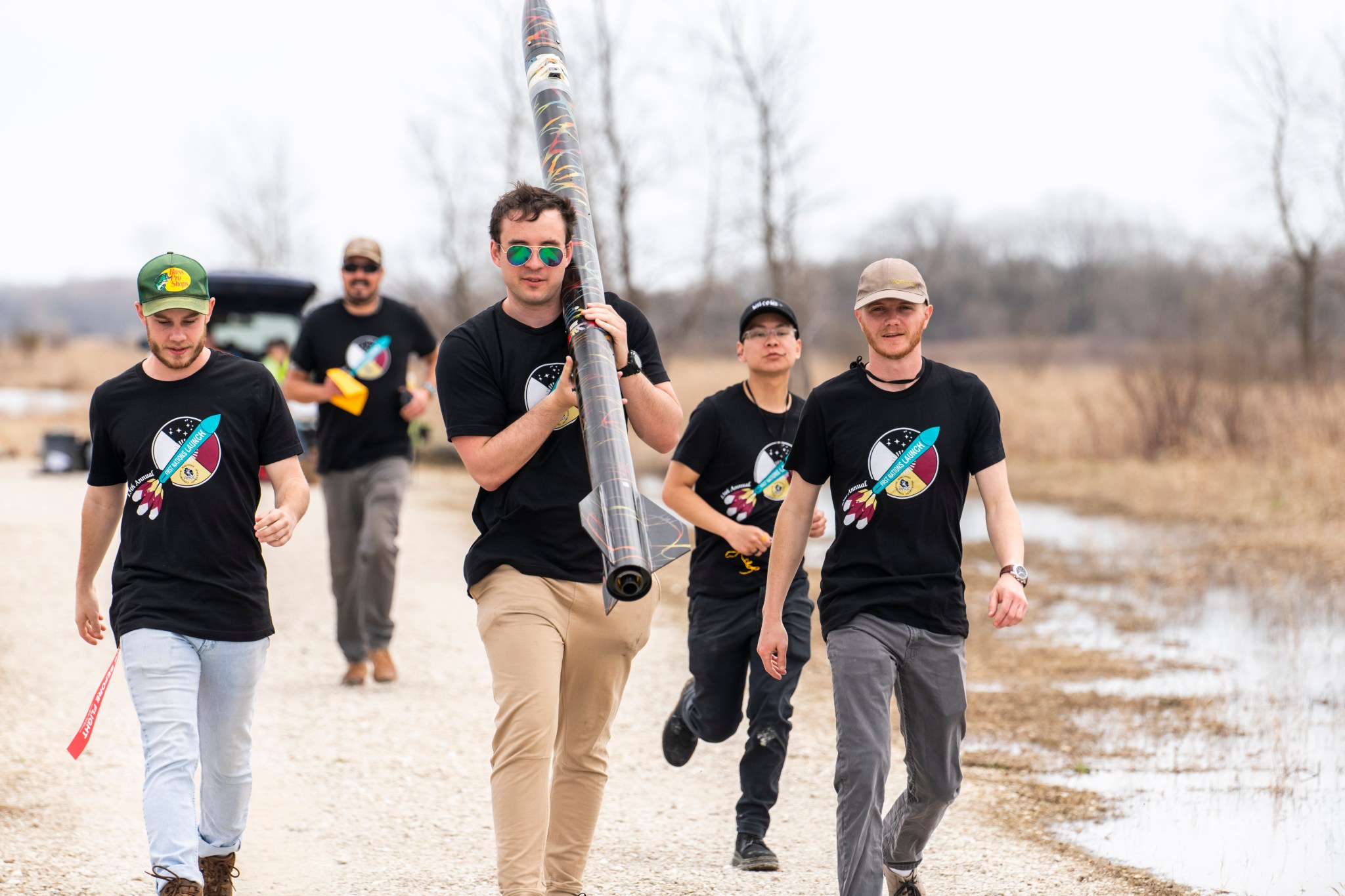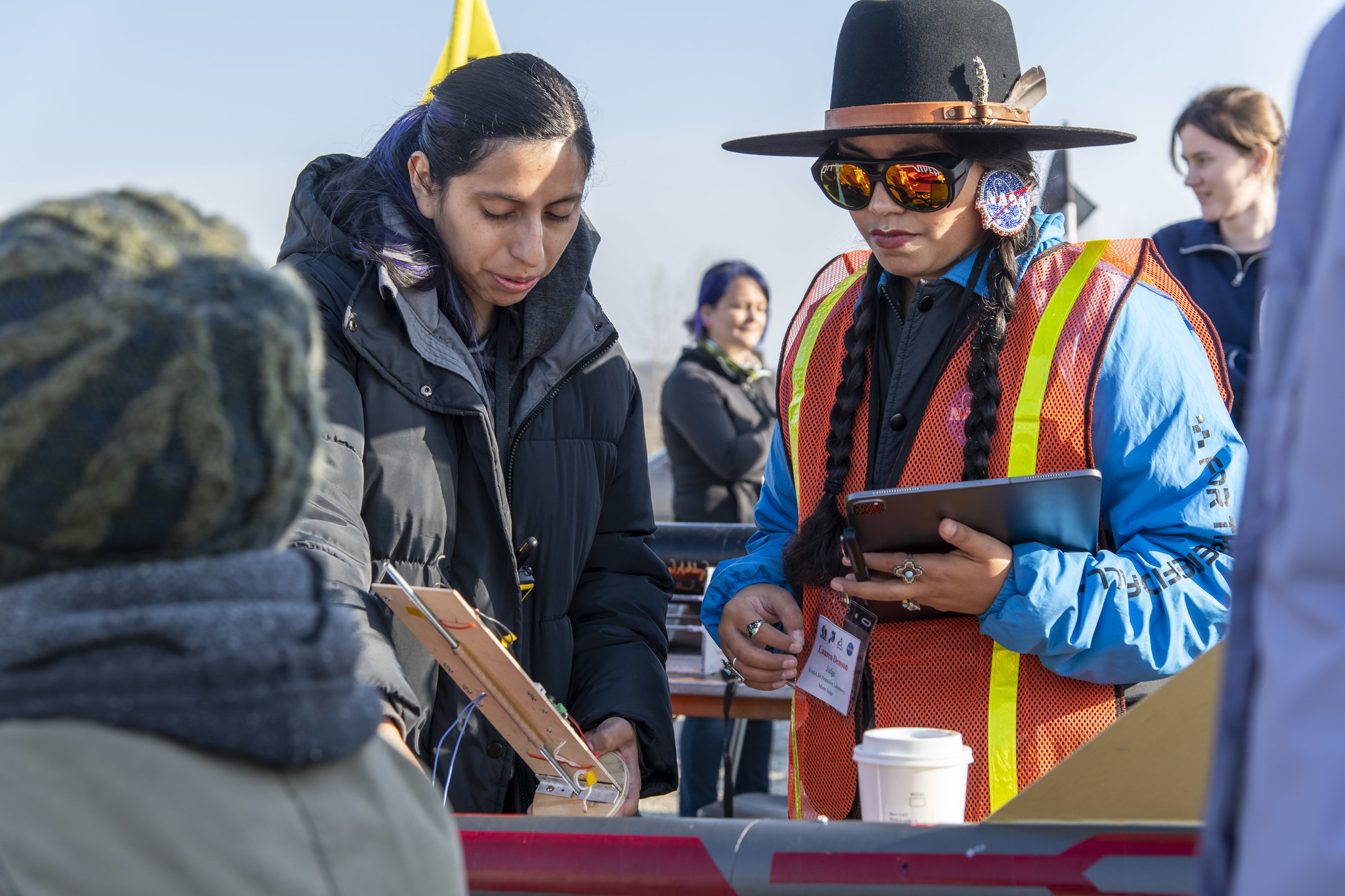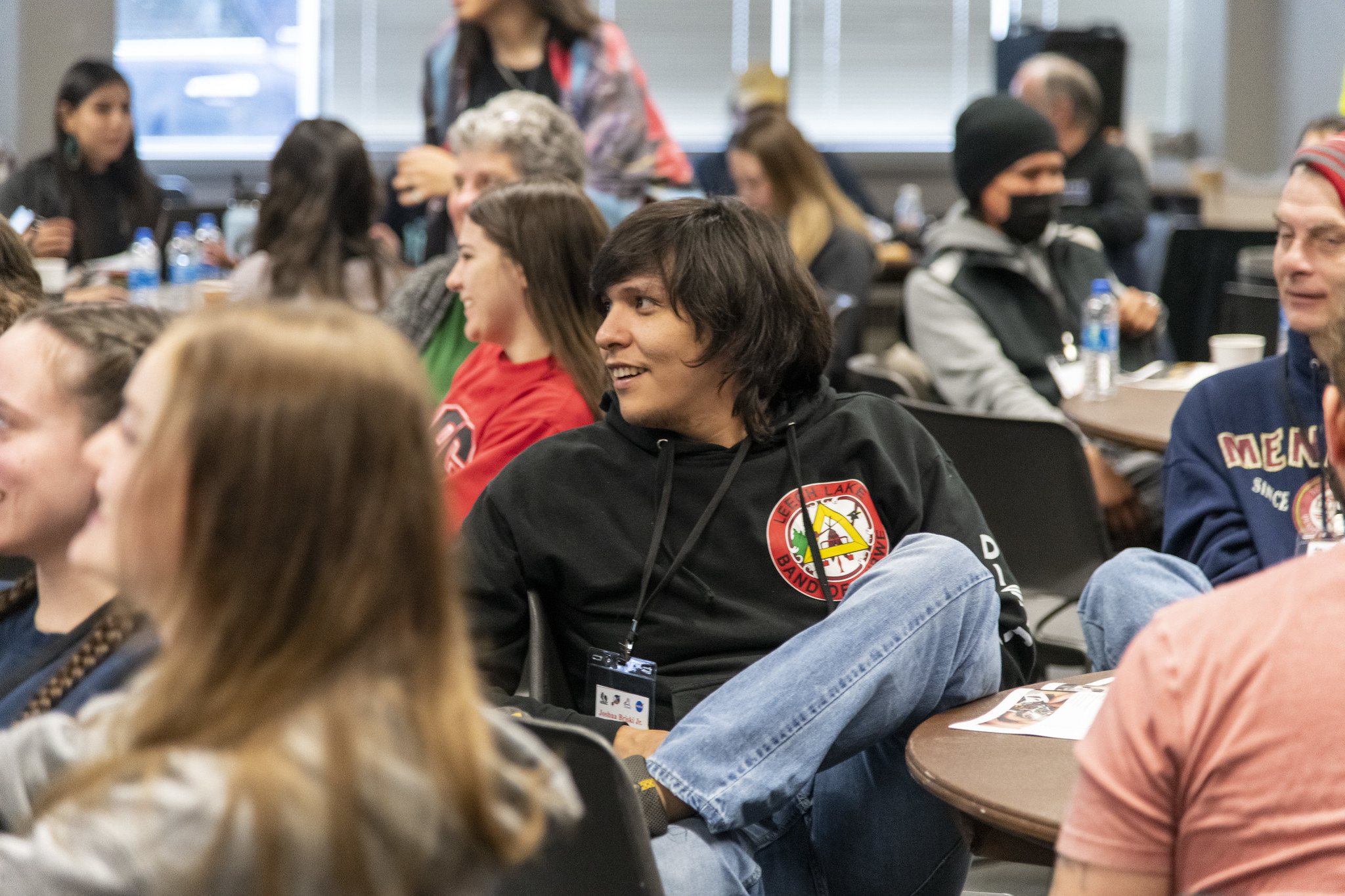The NASA First Nations Launch (FNL) competition, an Artemis Student Challenge, offers students from Tribal Colleges and Universities (TCUs), Native American Serving Nontribal Institutions (NASNTIs), and schools with American Indian Science and Engineering Society (AISES) chapters the opportunity to demonstrate engineering and design skills through high-powered rocketry.
From April 22-24, the Wisconsin Space Grant Consortium, which implements FNL on behalf of NASA, hosted the activity’s first Launch Weekend since 2019 at Carthage College in Kenosha, Wisconsin. In attendance at this 13th annual event were nearly 60 students from 13 schools around the country who represented 25 tribal organizations.
“FNL provides a great way for NASA to engage Native American students, who are often absent from national discussions on science, technology, engineering, and mathematics (STEM) underrepresentation,” said Shanessa Jackson, FNL lead at NASA’s Kennedy Space Center. “This event delivers life-expanding experiences to students who might not otherwise have the opportunity, including the first chance to engage the outside world in some cases.”
FNL 2022 called for faculty advisor-led teams of undergraduate students to conceive, design, fabricate, and fly dual deploy high-power rockets within three challenges with various technical requirements. For the full list of 2022 results, click here. Key highlights include the following:
- Moon Challenge Winner: University of California, Davis (second year in a row)
- International Division Winner: Queen’s University
- Mars Engineering Challenge Winner: Northern Arizona University
- Altitude Award: University of North Carolina, Pembroke
- Outreach Award: Northern Oklahoma College (a rookie team)
This year’s overarching competition theme was flight dynamics. The Moon Challenge required a GPS data logger onboard and an apogee of 3,500 to 4,000 ft., in addition to verifying stability and creating a 3D reconstruction of the trajectory of the flight. The Mars Engineering Challenge required a cold gas thruster system, gyroscope sensor, and an external camera – with the rocket maintaining a roll rate of 120-240 rpm for 3 seconds and reaching an altitude range of 3,500 to 4,000 ft. The Gateway Challenge required a design from a list of possible kit combinations and launch to an altitude of 2,500 ft.
“In addition to teams returning to Wisconsin for culture, community, curriculum, and competition, we introduced a new challenge and saw great levels of participation in terms of overall numbers and variety of schools,” added Christine Bolz, who manages the implementation of FNL at Carthage College. “We had a significant increase in Tribal and Native American Serving Institutions and those schools performed well, which is evident in the awards – with NASNTIs Northern Arizona and University of North Carolina both winning top awards.”
NASA officials in attendance included Torry Johnson, acting deputy associate administrator for STEM Engagement Programs, and Reagan Hunter, special assistant for the Office of Legislative and Intergovernmental Affairs. The weekend events featured a blessing by Dr. Bret Benally Thompson (White Earth Band of Ojibwe Tribe) from the AISES Council of Elders and a keynote address by James Wood (Osage Nation and Loyal Shawnee) who is the chief engineer of the Launch Services Program at Kennedy. The pool of Native American NASA and industry judges for the competition also included four FNL alumni who completed their STEM degrees and became engineers in the aerospace field.
FNL is a NASA Minority University Research and Education Project (MUREP) effort that supports the White House initiative on TCUs by engaging these organizations as well as directly involving students. MUREP, which is administered by NASA’s Office of STEM Engagement, provides assistance to MSIs such as TCUs in their efforts to recruit and retain underrepresented and underserved students into STEM fields. FNL also enables unique engagement with Native American communities and encourages students to pursue education and careers in STEM. Teams conduct outreach within their communities, serving as role models to inspire the next generation of explorers.
NASA’s Artemis Student Challenges introduce students to topics and technologies critical to the success of the agency’s program to land the first woman and first person of color on the Moon. Through the Artemis Student Challenges, students test and strengthen their skills for future mission planning and crewed space missions to other worlds.
FNL is facilitated by the Wisconsin Space Grant Consortium, managed by the Office of STEM Engagement at Kennedy, and funded by NASA MUREP. The Office of STEM Engagement uses challenges and competitions to engage the future technological workforce and stimulate innovation in technologies that benefit NASA and the Nation.
For more information about First Nations Launch and Artemis Student Challenges, please visit:
and












